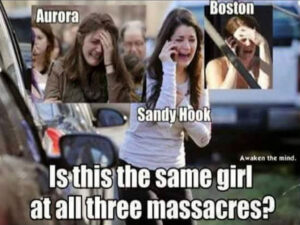return to updates
Reading the Signs
Click this link for full article
today’s lesson: Karl Marx
by Miles Mathis
There aren’t any communists. But scheming people must invent some malignant dangerous party. It’s an old joke. —Tolstoy
First published November 23, 2014
In a recent paper on the Paris Salon, I mentioned Marx in passing. I showed that the New York Tribune had been publishing Marx before the Civil War—which should have been surprising to us all. I have also recently linked the editor of the New York Tribune, Charles Dana, to US Intelligence. For more on that, see my papers on Theosophy and the Cultural Cold War. Those two facts get us into the subject of this paper, that being, who was Karl Marx?
In those recent papers, I said that Marx himself may not have been using Marxism as a feint to fascism, but I now admit that I was just hedging. I hadn’t yet done the research and didn’t wish to get into it in those earlier papers. So I had to be content with showing that the US Government was indeed using Marxism as a precursor to fascism, and as a veil for it. Here we will go even deeper. I will be able to show you the clues unmasking Marx himself as an early European agent.
As usual, I will show you the way I got in, to make it easier for you to follow my method. If you have read my previous papers, you will know what I knew before I began researching this one, so start there. In those papers, we found that much of recent history had been faked or manufactured by the Intelligence agencies, which I have traced back to the 1830s. Of course US Intelligence predates that, but we won’t need to go back that far in this paper.
What you don’t know is that I had tripped across another series of red flags, which I had been poking at without much final success for many months. In researching some of the actors involved in the
Manson event, I had stumbled across New Trier High School outside of Chicago. I dug a bit in that ground, finding first a strong link to Hollywood going back many decades, and then a weaker link leading into the wilderness, so to speak. Graduates of New Trier include Charlton Heston, Ann- Margret, Rock Hudson, Bruce Dern, and Hugh O’Brian (who just happened to run into Sharon Tate while she was being interviewed on Carnaby Street in London in 1966 by Merv Griffin—notice in that youtube link that Griffin asks O’Brian if he is CIA!). That is just a few of the many, many famous actors who attended New Trier High School.
Those who know that Marx was born in Trier, Germany, will understand the raw connection here, but for the others I will just say that we are going to take a longish detour before we get back to Marx. You may not understand what this high school in Chicago has to do with the title of the paper, but in a few pages you will. You will also be happy we took the detour, since you will probably learn many things you didn’t already know.
New Trier high school is famous for producing actors, but is has produced many famous non-actors as well, including James McNerney, President/CEO of GE, 3M, and Boeing. Also John Donohue, president of eBay; Chris Cox, VP of Facebook; Doublas Conant, President/CEO of Campbell Soups; Michael Rogers, director of the NSA; Donald Rumsfeld, Secretary of Defense; Martha Minow, Dean of Harvard Law; Rahm Emanuel, White House Chief of Staff; writer Scott Turow; poet Archibald MacLeish; the fake activist Brad Will; and the fake serial killer Benjamin Nathaniel Smith.
You will say, “So, it was a rich suburb of a very big city. These things happen.” Do they? To see if they do, let us follow just one of these people for a bit. Let’s take the first one I mentioned, Charlton Heston. I wanted to just see if Heston was already living in that school district, or if he transferred in from somewhere. Guess what? The info has been scrubbed. Heston’s biographers can’t even agree on where he was born and raised, much less on where exactly he was living in his teens. Heston himself has said “he was not very good at remembering addresses or his early childhood.” [Rick Schultz interview, 1996] Convenient. Go talk to some 70 year olds and see if they can’t remember where they grew up. In the same interview, Heston said, “Since I have a strong mnemonic faculty, it was easy for me to slide through to the easy Bs [in school].” So he had a great memory—except for things like where he grew up. He also said this: “The house I lived in my boyhood in Michigan, as far as I know,





